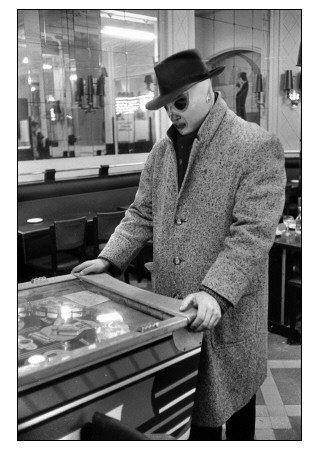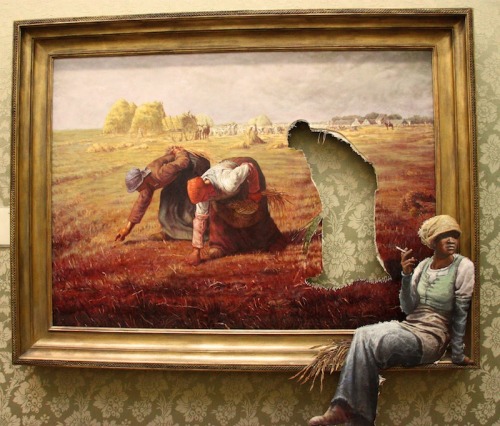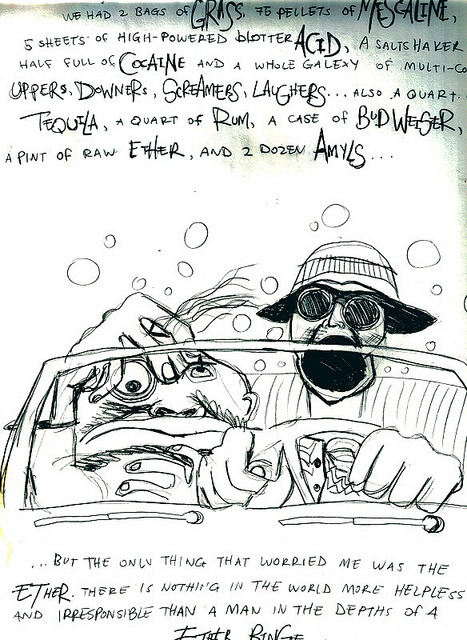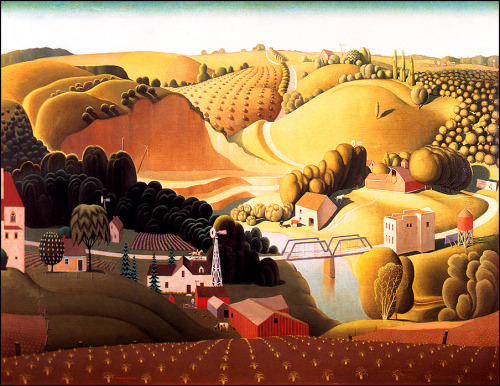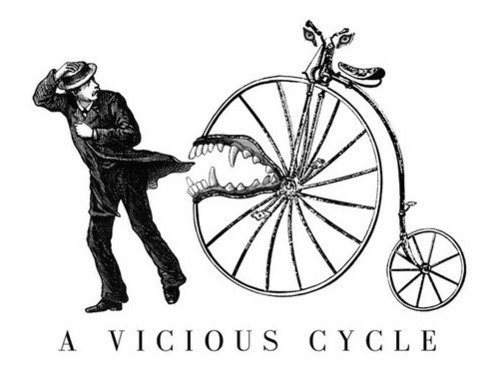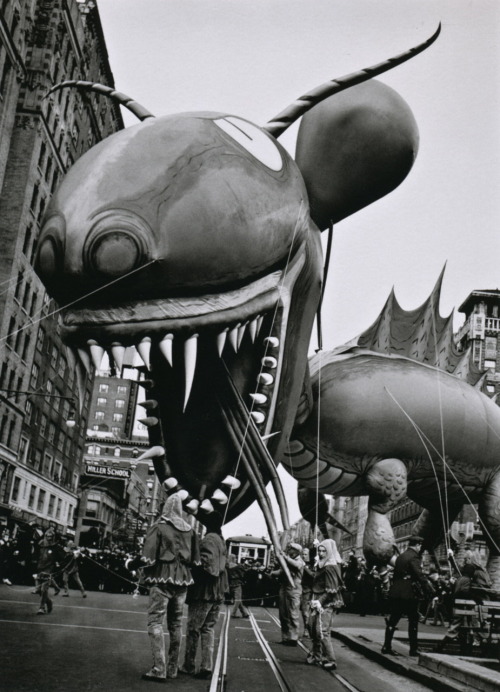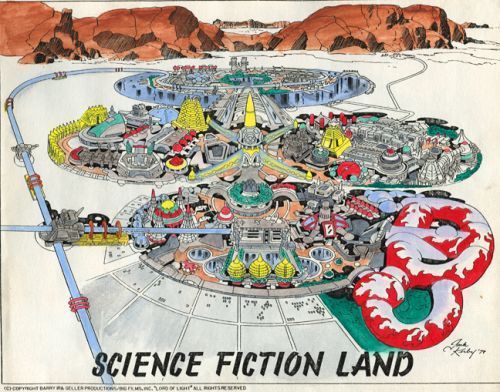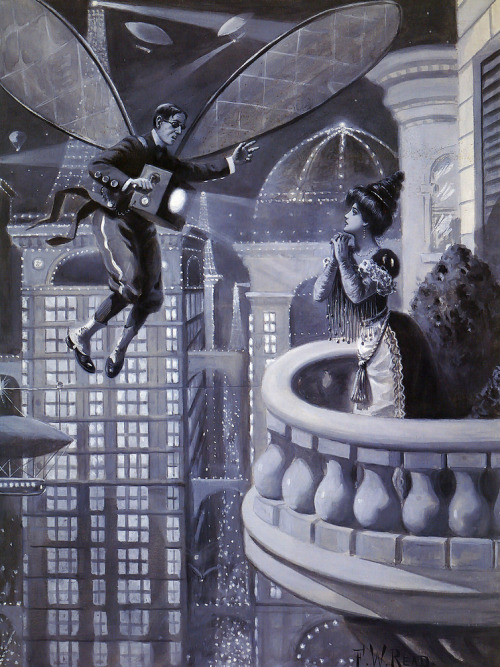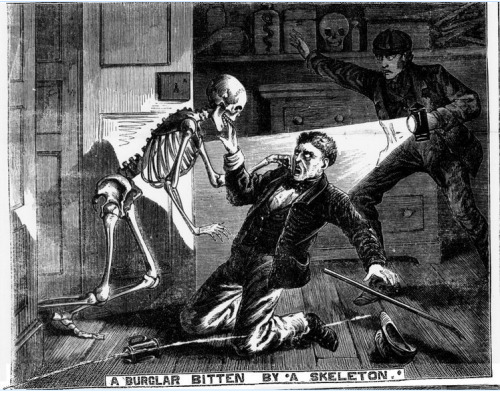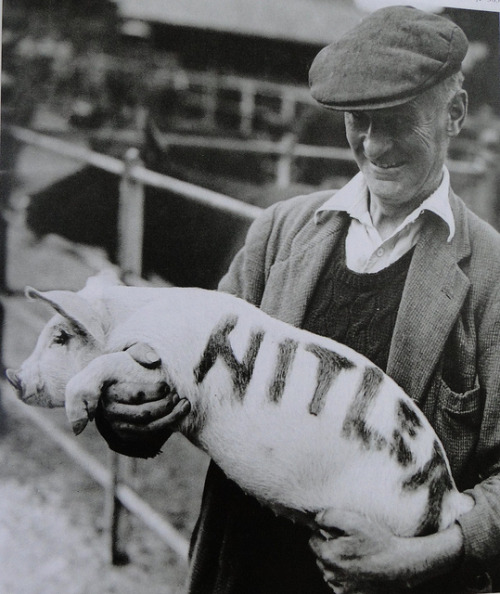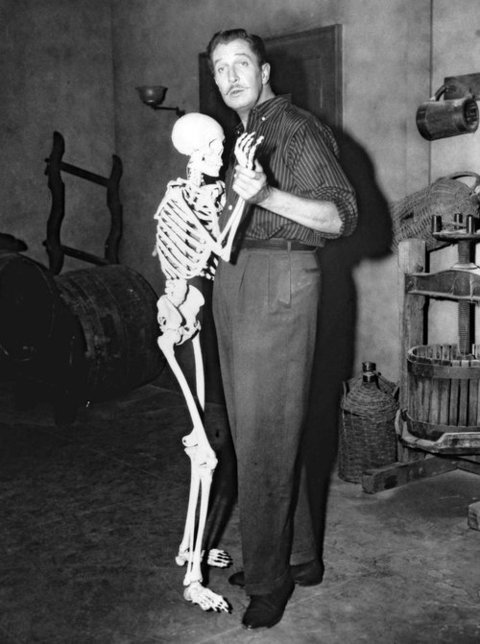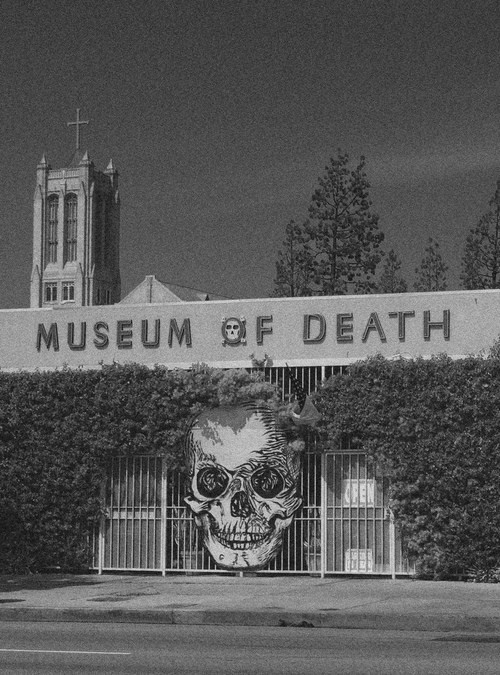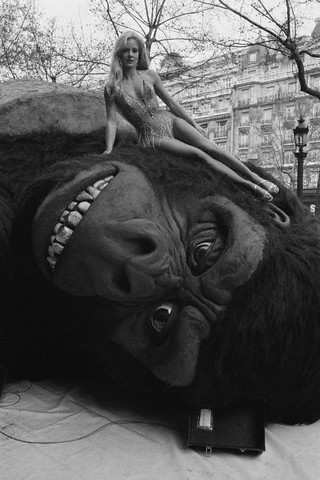SOUL MAN™ Teaser Guillaume Ivernel (Blacklight Movies) from Blacklight Movies on Vimeo.
Thursday, March 31, 2011
Wednesday, March 30, 2011
Tuesday, March 29, 2011
Dark Roasted Weirdsville
Check it out: a brand new Dark Roasted Blend piece I did just went up: this time about the screw-drive machines
Ever since Mr. Bronze Age had the inspired thought that led to the wheel humans have been trying to think of new ways to get from point A to point B. Several thousand years after Mr. Bronze Age's inspired invention, in the 1770s to be rather inexact, British inventor Richard Lovell Edgeworth, created the ancestor of what would eventually become the continuous track method of locomotion. Don't recognize the term? You'll certainly know it when you see it in operation on many tractors or, where it's head-smackingly obvious, on every tank that's been on every battlefield since the British first used it in World War One.
But in 1868 the American inventor Jacob Morath had a truly inspired idea: a screw-propelled vehicle. Don’t recognize that term either? That's not surprising because, even though many people today will celebrate its virtues, it's not exactly a common sight.
The basic idea of a screw-propelled vehicle is simple enough: instead of wheels or tracks, you build a vehicle with a pair of, as Wikipedia puts it "auger-like cylinders fitted with a helical flange." To make that a bit easier to understand, think of a machine that literally crawls along the ground on a pair of giant screws. To turn you use the same method a tank does: one screw either gets locked in place while the other one doesn't or, to make a 360 turn, turn one screw one way and the other ... well, the other way.
In 1907, James and Ira Peavey, were quite literally driven to create a practical screw-propelled machine to help their lumbering in Maine. The machine proved very useful since the screw-propulsion could move whatever you wanted moved through snow and mud and all kinds of nasty conditions. You also didn't need to worry about anything getting caught in the tracks, like with a caterpillar, and since they had much fewer moving parts they were easier to maintain.
Quite a few screw machines were built afterwards, though they remained less than popular. But when World War Two loomed, the idea of a screw-propelled war machine intrigued the eccentric genius Geoffrey Pyke -- who you no doubt remember as the inventor of the iceberg aircraft carrier. Alas, Pyke's concept of a very small, very fast, attack machine got (ahem) shot down and his idea was eventually whittled down to the very-rarely known Weasel. Unfortunately, the Weasel was whittled down even more and the screw propulsion was dropped in favor of standard caterpillar tracks.
Another benefit screws have over caterpillars is the possibility of being amphibious. There's no reason, for instance, that the screws couldn't be hollow and so could also act as floats. During the Vietnam war, for example, Chrysler experimented with a screw-propelled machine. Unfortunately, their take on the technology didn't exactly wow the US military and the project was dropped.
The Soviets, in the meantime, had a machine specifically designed to go where no man ever wanted to go -- in their case to retrieve cosmonauts from remote landing sites: the poetically named ZIL-2906.
One of the most amazing uses of screw propulsion has to be Joseph Jean de Bakker's. In the 1960s the Dutch inventor created the Amphirol, a machine designed to take anyone pretty much anywhere. What made Joseph Jean de Bakker machine better than other versions of screwing yourself across the landscape was its performance. Not only could his Amphirol go across marshes and over other sticky situations but it was also amphibious. That wasn't the end of its wow factor, though, because the Amphirol could do all that and also crawl sideways. Try doing that with four wheels or with caterpillar tracks.
While still rare, the idea of screw-propulsion is still out there: the concept appearing in all kinds of civilian and military proposals. While watching one in action, though, William Cowper's quote comes immediately to mind: it "moves in a mysterious way."
Ever since Mr. Bronze Age had the inspired thought that led to the wheel humans have been trying to think of new ways to get from point A to point B. Several thousand years after Mr. Bronze Age's inspired invention, in the 1770s to be rather inexact, British inventor Richard Lovell Edgeworth, created the ancestor of what would eventually become the continuous track method of locomotion. Don't recognize the term? You'll certainly know it when you see it in operation on many tractors or, where it's head-smackingly obvious, on every tank that's been on every battlefield since the British first used it in World War One.
But in 1868 the American inventor Jacob Morath had a truly inspired idea: a screw-propelled vehicle. Don’t recognize that term either? That's not surprising because, even though many people today will celebrate its virtues, it's not exactly a common sight.
The basic idea of a screw-propelled vehicle is simple enough: instead of wheels or tracks, you build a vehicle with a pair of, as Wikipedia puts it "auger-like cylinders fitted with a helical flange." To make that a bit easier to understand, think of a machine that literally crawls along the ground on a pair of giant screws. To turn you use the same method a tank does: one screw either gets locked in place while the other one doesn't or, to make a 360 turn, turn one screw one way and the other ... well, the other way.
In 1907, James and Ira Peavey, were quite literally driven to create a practical screw-propelled machine to help their lumbering in Maine. The machine proved very useful since the screw-propulsion could move whatever you wanted moved through snow and mud and all kinds of nasty conditions. You also didn't need to worry about anything getting caught in the tracks, like with a caterpillar, and since they had much fewer moving parts they were easier to maintain.
Quite a few screw machines were built afterwards, though they remained less than popular. But when World War Two loomed, the idea of a screw-propelled war machine intrigued the eccentric genius Geoffrey Pyke -- who you no doubt remember as the inventor of the iceberg aircraft carrier. Alas, Pyke's concept of a very small, very fast, attack machine got (ahem) shot down and his idea was eventually whittled down to the very-rarely known Weasel. Unfortunately, the Weasel was whittled down even more and the screw propulsion was dropped in favor of standard caterpillar tracks.
Another benefit screws have over caterpillars is the possibility of being amphibious. There's no reason, for instance, that the screws couldn't be hollow and so could also act as floats. During the Vietnam war, for example, Chrysler experimented with a screw-propelled machine. Unfortunately, their take on the technology didn't exactly wow the US military and the project was dropped.
The Soviets, in the meantime, had a machine specifically designed to go where no man ever wanted to go -- in their case to retrieve cosmonauts from remote landing sites: the poetically named ZIL-2906.
One of the most amazing uses of screw propulsion has to be Joseph Jean de Bakker's. In the 1960s the Dutch inventor created the Amphirol, a machine designed to take anyone pretty much anywhere. What made Joseph Jean de Bakker machine better than other versions of screwing yourself across the landscape was its performance. Not only could his Amphirol go across marshes and over other sticky situations but it was also amphibious. That wasn't the end of its wow factor, though, because the Amphirol could do all that and also crawl sideways. Try doing that with four wheels or with caterpillar tracks.
While still rare, the idea of screw-propulsion is still out there: the concept appearing in all kinds of civilian and military proposals. While watching one in action, though, William Cowper's quote comes immediately to mind: it "moves in a mysterious way."
Monday, March 21, 2011
Sunday, March 20, 2011
Thursday, March 17, 2011
Wednesday, March 16, 2011
Wednesday, March 9, 2011
Dark Roasted Weirdsville
Check it out: a brand new Dark Roasted Blend piece I did just went up: this time about wild world of slot cars.
Be it jewel or toy, not the prize gives the joy, but the striving to win the prize.
- Robert Bulwer-Lytton
1912 was a rather eventful year: New Mexico and Arizona became states, The RMS Titanic hit a iceberg and sank, The Girl Scouts were founded, the Boston Red Sox defeated the New York Giants, and Lionel toys produced and sold the very first slot car set.
While the present generation has thoroughly moved into the digital age, for millions of people before them slot cars were a cherished feature of childhood. For a few wonderfully eccentric hobbyists, they are still the next best thing to climbing into turbo-charged reality, smashing the gas pedal down, and roaring into the thrill of the race.
I am an artist the track is my canvas and my car is my brush.
- Graham Hill
For those unfortunate few who never had the bliss of assembling the track, picking just the right car, and squeezing the little plastic control and sending that same perfect car flying out of control across the rec room carpeting, slot cars are mechanically very simple: the track – which is modular, allowing an almost infinite number of configurations, from the Monaco Grand Prix to Germany's Nürburgring – has two power strips and the cars have fickle brushes to pick up the power, and a neat little electric motor to make the wheels go 'round.
But it's what those already-mentioned eccentric hobbyists have done with that simple concept that is truly staggering: from cars that are exquisitely detailed and painstakingly reproduced from high-performance reality to tracks that run from exact scale copies of legendary circuits to totally insane fantasy, slot cars have become the medium for an dazzling amount of creativity.
Anything happens in Grand Prix racing, and it usually does.
- Murray Walker
If everything seems under control, you’re just not going fast enough.
- Mario Andretti
Why does a track have to be just loops and hammerheads and all that? Here's a really fun and unique approach to racing: a hill climb!
When you talk about brilliant track designs, though, you have to talk about the beautiful, and commonly considered most impressive, slot car track in the world: James-Michael Gregory Harlan's White Lake Formula 1 track. Taking over 3 years to complete, the track is the ultimate racing circuit in a very convenient smaller scale.
It is amazing how may drivers, even at the Formula One Level, think that the brakes are for slowing the car down.
- Mario Andretti
Even though they may be small in stature, that doesn't mean the slot cars can’t be ... well, 'immense' doesn't quite fit but you have to admit the track that was created by journalist, and Top Gear presenter, James May for his wonderful BBC series Toy Stories, has a huge amount of WOW power: ladies and gentlemen, auto enthusiasts of all scales, the world's longest slot car track!
If you don’t know James May and his Toy Stories show you really should: determined to reintroduce 21st century kids to his own beloved childhood hobbies, he – with the help of the great British public – created and assembled a full-size model Spitfire, a Meccano bridge strong enough to support a man, a Lego house big enough to actually live in, an entire garden made out of Plasticine (and enter it into the Chelsea garden show), then a ten mile long model train track.
But the episode we're interested in is the one done as a celebration of Scalextric (the British slot car manufacturer) as well as the legendary Brooklands racetrack. Using planning that rivaled putting on a full-scale Grand Prix, James created a 2.75 mile long track that followed the original race course. When it was finished, the flag was dropped and two teams – one made of slot car enthusiasts and one of just local folks – blasted at scale speeds towards the finish line. But since it wasn't possible to power the entire length of the track a relay system had to be used, so as the car passed from one section of track to the other someone new had to take control.
And if you think that all this is a bit too whimsical -- that slot cars are fine and dandy for crazy stunts or seriously dedicated hobbyists -- then take a look at the following designs for public transportation systems, all of them using the same basic idea of our beloved childhood toy. The slot car is not just racing in miniature, a venue for art and eccentricity, but it's actually become a plan for the future of transpiration.
Be it jewel or toy, not the prize gives the joy, but the striving to win the prize.
- Robert Bulwer-Lytton
1912 was a rather eventful year: New Mexico and Arizona became states, The RMS Titanic hit a iceberg and sank, The Girl Scouts were founded, the Boston Red Sox defeated the New York Giants, and Lionel toys produced and sold the very first slot car set.
While the present generation has thoroughly moved into the digital age, for millions of people before them slot cars were a cherished feature of childhood. For a few wonderfully eccentric hobbyists, they are still the next best thing to climbing into turbo-charged reality, smashing the gas pedal down, and roaring into the thrill of the race.
I am an artist the track is my canvas and my car is my brush.
- Graham Hill
For those unfortunate few who never had the bliss of assembling the track, picking just the right car, and squeezing the little plastic control and sending that same perfect car flying out of control across the rec room carpeting, slot cars are mechanically very simple: the track – which is modular, allowing an almost infinite number of configurations, from the Monaco Grand Prix to Germany's Nürburgring – has two power strips and the cars have fickle brushes to pick up the power, and a neat little electric motor to make the wheels go 'round.
But it's what those already-mentioned eccentric hobbyists have done with that simple concept that is truly staggering: from cars that are exquisitely detailed and painstakingly reproduced from high-performance reality to tracks that run from exact scale copies of legendary circuits to totally insane fantasy, slot cars have become the medium for an dazzling amount of creativity.
Anything happens in Grand Prix racing, and it usually does.
- Murray Walker
If everything seems under control, you’re just not going fast enough.
- Mario Andretti
Why does a track have to be just loops and hammerheads and all that? Here's a really fun and unique approach to racing: a hill climb!
When you talk about brilliant track designs, though, you have to talk about the beautiful, and commonly considered most impressive, slot car track in the world: James-Michael Gregory Harlan's White Lake Formula 1 track. Taking over 3 years to complete, the track is the ultimate racing circuit in a very convenient smaller scale.
It is amazing how may drivers, even at the Formula One Level, think that the brakes are for slowing the car down.
- Mario Andretti
Even though they may be small in stature, that doesn't mean the slot cars can’t be ... well, 'immense' doesn't quite fit but you have to admit the track that was created by journalist, and Top Gear presenter, James May for his wonderful BBC series Toy Stories, has a huge amount of WOW power: ladies and gentlemen, auto enthusiasts of all scales, the world's longest slot car track!
If you don’t know James May and his Toy Stories show you really should: determined to reintroduce 21st century kids to his own beloved childhood hobbies, he – with the help of the great British public – created and assembled a full-size model Spitfire, a Meccano bridge strong enough to support a man, a Lego house big enough to actually live in, an entire garden made out of Plasticine (and enter it into the Chelsea garden show), then a ten mile long model train track.
But the episode we're interested in is the one done as a celebration of Scalextric (the British slot car manufacturer) as well as the legendary Brooklands racetrack. Using planning that rivaled putting on a full-scale Grand Prix, James created a 2.75 mile long track that followed the original race course. When it was finished, the flag was dropped and two teams – one made of slot car enthusiasts and one of just local folks – blasted at scale speeds towards the finish line. But since it wasn't possible to power the entire length of the track a relay system had to be used, so as the car passed from one section of track to the other someone new had to take control.
And if you think that all this is a bit too whimsical -- that slot cars are fine and dandy for crazy stunts or seriously dedicated hobbyists -- then take a look at the following designs for public transportation systems, all of them using the same basic idea of our beloved childhood toy. The slot car is not just racing in miniature, a venue for art and eccentricity, but it's actually become a plan for the future of transpiration.
Tuesday, March 8, 2011
Sunday, March 6, 2011
Friday, March 4, 2011
Thursday, March 3, 2011
Tuesday, March 1, 2011
Subscribe to:
Posts (Atom)
